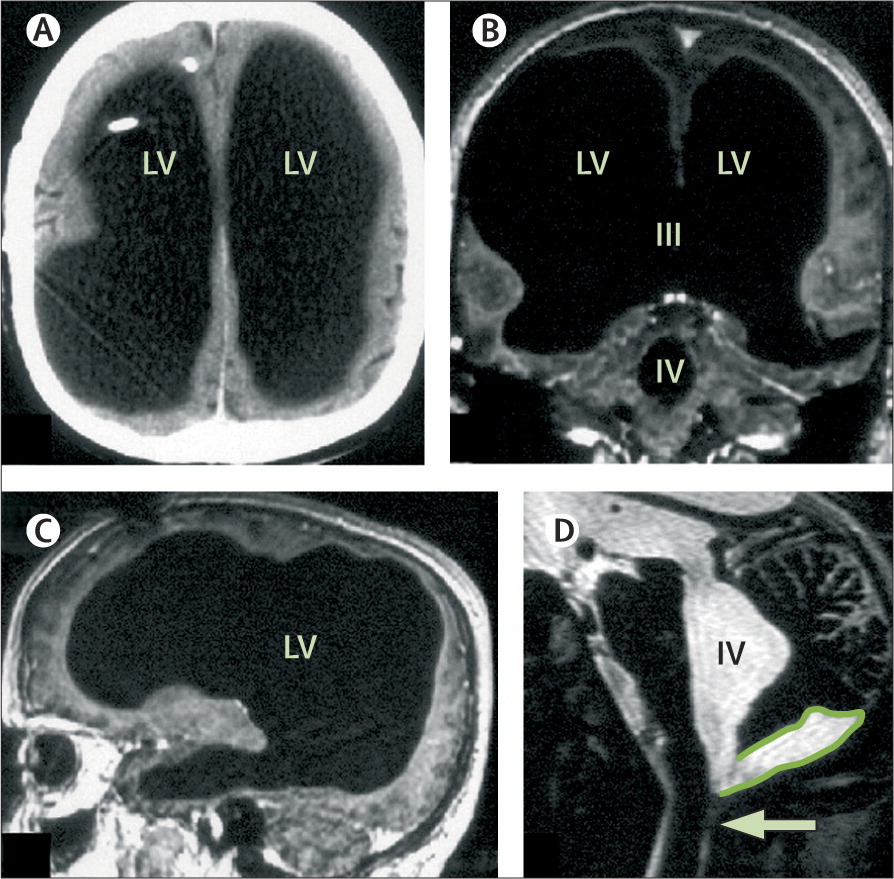Trigger for consciousness? A 25-year-old guy was pulled out of a coma, focusing ultrasound on a small area in the center of the brain.

The main character of the film "Remember" also suffered from damage to the thalamus
A group of scientists from the University of California at Los Angeles published a report on the first case in the history of medicine that a patient was removed from a coma by non-invasive methods. The patient managed to be brought to consciousness by acting with ultrasound pulses on a small area of the brain called the thalamus . On the third day after exposure, the patient began to understand the speech and completely came out of the coma, and on the fifth day he tried to walk.
While this is an isolated case. The return of consciousness to the patient can be a coincidence or an accident. Maybe due to his young age. Scientists are now preparing more extensive clinical trials of the device .
')
If the theory is confirmed, an experimental ultrasound generator can be approved for use by all medical institutions. It can bring tens of thousands of people out of a vegetative state and awake coma . At the same time, scientists will come closer to understanding the phenomenon of consciousness - the fundamental way in which a person relates to the world.
The results of the experiment may be an accident. But scientists have long been exploring this area of the brain, and earlier evidence was obtained that the thalamus is related to consciousness.
In 2007, the first such operation was performed with an effect on the thalamus. A 38-year-old patient, who had been in a waking coma for six years (minimally conscious state), was able to regain some of the functionality by acting on the thalamus with electrodes [1] . The lead researcher who conducted the operation considers the ultrasound exposure to be promising: “This is an intriguing and interesting opportunity,” said Dr. Nicholas Schiff, a neuroscientist at the Biomedical Research Center Weill Cornell Medicine at Cornell University (USA).
The thalamus is a region of the brain that is responsible for the redistribution of information from the senses, with the exception of smell, to the cortex. After information about any sensation has entered the core of the thalamus, there is its primary processing. There are four main nuclei in the thalamus: a group of neurons that redistribute visual information; core, redistributing auditory information; the core redistributing tactile information and the core redistributing a sense of balance and balance. Located in the central part of the brain.

Limbic system
Damage to the thalamus can lead to sleep disturbances, involuntary shaking of hands in a conscious state, as well as anterograde amnesia, when the patient remembers all the events before the injury, but cannot remember anything else. The protagonist of the famous film “Remember” ( Memento ) Christopher Nolan suffered from damage to the thalamus - one of the best films in cinema history .
It is clear that the thalamus is associated with the formation of memories. But is the presence of memory and memories connected with the presence of consciousness? Perhaps connected directly.
In the first history of the operation on non-invasive removal of a person from a coma, scientists from the University of California used an experimental device similar to a saucer with a diameter of 71.5 mm in a plastic case filled with deionized degassed water and sealed with a thin polyethylene membrane that is transparent to ultrasound. The transmitter focuses ultrasound radiation at 650 kHz exactly in the central region of the brain where the thalamus is located. Specifically, a BXPulsar 1001 radiator manufactured by Brainsonix Inc. was used.

Experimental device for ultrasonic stimulation of the thalamus. Image: Martin M. Monti / University of California, Los Angeles
As it turned out, the low intensity focused ultrasound pulsation (LIFUP) ultrasonic pulsation method is capable of non-invasively affecting the area deep inside the brain, without affecting the neighboring departments. This technique has been tested before in humans and animals - and proved to be great in terms of safety. [2] [3] . Previously, the impact of LIFUP on the thalamus of laboratory mice helped speed up the return of brain functionality after it was damaged. [3] . Those results became the basis for the first human experiment.
For the first in the history of the clinical experiment LIFUP on a person ( NCT02522429 in the base of clinical trials), a 25-year-old patient was selected who was in a coma for 14 days after receiving a traumatic brain injury in a traffic accident.
A computed tomography scan revealed bifrontal brain contusions and subdural hematoma (hemorrhage between the solid and arachnoidal meninges). During the experiment, the patient continued to enter the same sedatives as before.
During the LIFUP procedure, pulses were applied with a repetition of 100 Hz (100 times per second), the duration of each pulse was 0.5 ms. A total of 10 ultrasound effects were performed with a deformed spatial-temporal intensity of 720 mW / cm 2 , each lasting 30 seconds, with intervals between them of 30 seconds. The procedure was controlled on a powerful Tesla tomograph 3 (Magnetom Tim Trio, manufactured by Siemens), installed at the Medical Research Center of the University of California at Los Angeles.

Ultrasound neuromodulation device BXPulsar production company Brainsonix Inc. Photo: Brainsonix Inc.
Before the procedure, the patient showed a steady state of waking coma for 14 days. Three days after the session, the patient showed a complete understanding of speech, a steady response to commands, and a steady yes / no communication with nods. Doctors diagnosed way out of the state of awake coma. On the fifth day after LIFUP, the patient attempted to walk.
A successful experiment to remove patients from a coma will be a long-awaited salvation for many people. The inventors mention that this technology will help relieve a huge emotional and financial burden from relatives of patients, reduce the burden on the medical infrastructure and the national budget. Now patients are kept in a state of coma for years, which is very expensive and also raises a number of difficult legal and ethical issues. [4] .
The study has great practical benefits and also provides food for thought about the nature of consciousness. These discussions have escalated in recent years, after a clinical case of a very interesting patient was described in the scientific literature. For many years he lived a normal and healthy life, even unaware of the absence of 90% of his brain . The man measured intelligence, which turned out to be below average: IQ 75, but this did not prevent him from working as a civil servant, getting married and having two children.

Magnetic resonance tomogram of a patient with virtually no brain, but leading a normal social life. Photo: Feuillet et al./The Lancet
Prior to this incident, scientists believed that consciousness could be associated with various specific areas of the brain, such as a claustrum (fence) —a thin (about 2 mm thick) irregular plate consisting of gray matter and located under the cerebral cortex in the depths of the white matter. . Another group of researchers from Princeton University put forward the theory that consciousness is associated with the visual cortex. But the history of the French patient put both these theories under great doubt.
There are even new theories, such as the " provision on radical plasticity " of the brain. This theory postulates: the presence of consciousness means that a person not only has information, but also knows about the fact that he has information. The brain continuously and unconsciously learns to re-describe its own activity to itself, and these self-diagnostic reports form the basis of conscious experience. It turns out that for the presence of consciousness is critical the presence of memory.
Now there is new evidence that the nature of consciousness is associated with the work of the thalamus and the nature of memory.
In the end, as the protagonist of the film Memento said , we all need memories to remind us of who we are.
The report of doctors from the University of California at Los Angeles was published on August 24, 2016 in the Journal of Brain Stimulation
(doi: 10.1016 / j.brs.2016.07.008, pdf ).
Literature
[1] Schiff ND, Giacino JT, Kalmar K, Victor JD, Baker K, Gerber M, Fritz B, Eisenberg B, O'connor J, Kobylarz EJ, Farris S. Nature 2007; 448 (7153): 600-3. Back to article
[2] Yoo SS, Kim H, Min BK, Franck SP. Transcranial focused ultrasound to thalamus alters anesthesia time in rats. Neuroreport 2011; 22 (15): 783. Back to article
[3] Bystritsky A, Korb AS, Douglas PK, Cohen MS, Melega WP, Mulgaonkar AP, DeSalles A, Min BK, Yoo SS. A review of low-intensity focused ultrasound pulsation. Brain stimul 2011; 4 (3): 125-36. Back to article
[4] Monti MM, Sannita WG. Brain Function and Responsiveness in Disorders of Consciousness. Springer International Publishing: Switzerland; 2016. Return to article
Source: https://habr.com/ru/post/397165/
All Articles